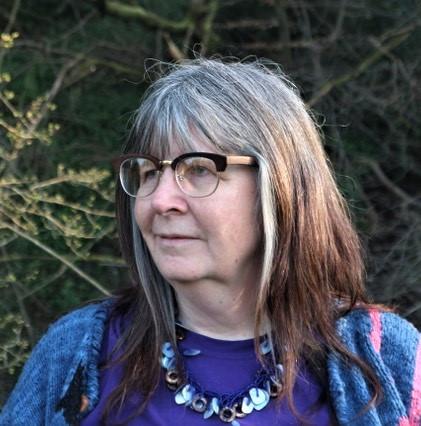 This is the penultimate guest post about a title from my Summer Reads selection and I’m delighted to welcome back Alison Layland, who wrote about her work as a literary translator on her first visit to the Sofa some time ago. Her new novel Riverflow could be described as an ‘eco-thriller’ (if that’s not already a thing, I’m sure it soon will be), combining the popularity of thrillers in general with an increasing awareness of environmental issues and the urgent need to reduce the damaging impact of human activity on the natural world.
This is the penultimate guest post about a title from my Summer Reads selection and I’m delighted to welcome back Alison Layland, who wrote about her work as a literary translator on her first visit to the Sofa some time ago. Her new novel Riverflow could be described as an ‘eco-thriller’ (if that’s not already a thing, I’m sure it soon will be), combining the popularity of thrillers in general with an increasing awareness of environmental issues and the urgent need to reduce the damaging impact of human activity on the natural world.
For me, today’s post is a winning combination all round: a good (and topical) novel, set in a place which doesn’t often appear AND published by a small independent – this time the credit goes to Honno Welsh Women’s Press. First, Alison offers a tour of the Shropshire borderland where the dramatic events of Riverflow take place, and my review of the book follows:
Borderlands are a unique place to live, and my home on the border between Wales and England is no exception. With the mountains to the west and the rolling Shropshire plain to the east, Welsh language and culture to one side, English to the other, it is a place of contrasts. We have beautiful villages, bustling towns and an inspiring landscape, peopled by close-knit communities. I have written stories set in Wales, but for the setting of my latest novel, Riverflow, although I was pulled in both directions, I soon settled on rural Shropshire, and the river Severn in particular.

At around the time I was beginning to write the novel, we moved house from a remote village in the Welsh mountains. There, during periods of wet weather, we had our own natural rain gauge: folds in the far slope of our steep-sided valley would change to white ribbons as streams began to flow; different ones appeared depending on how strong or prolonged the rain was. In the worst cases, we would feel almost guilty as we imagined these little streams gathering and feeding the river that itself became a tributary of the Severn, causing serious flooding in communities and towns downstream.
From the story of Noah to drowned civilisations such as Atlantis or Cantre’r Gwaelod in Welsh legend, floods have had a unique hold on our collective imagination. The catalyst for the location of Riverflow came when visiting a favorite pub and campsite that stands alone on the banks of the Severn, not far from Oswestry in Shropshire. The Royal Hill is situated on a broad, low-lying floodplain that is subject to frequent flooding. At its worst, the pub can be cut off, and on the wall is a montage of photos, including an intriguing large-wheeled vehicle used to transport people to the pub when floodwater makes the roads impassable. There are also several atmospheric photos of the flooded landscape.
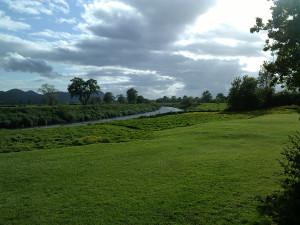
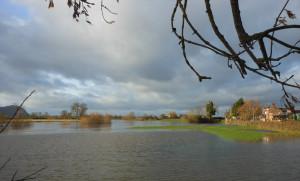
Although I had a very specific location in mind as I was writing, and feel as though I’m visiting Alderleat – my characters’ smallholding – every time I go to this particular stretch of the Severn, the novel’s setting and the village of Foxover are totally fictional. Foxover’s Horseshoes inn is not the Royal Hill, or indeed my own village local, but does give an authentic portrayal of the role of the country pub as the hub of a community.
I’m drawn to fictional settings with their feet firmly planted in reality, as I want to evoke a strong sense of place while retaining the freedom to adapt features to suit my story. There’s something satisfying about creating a landscape with its fields, woods and village; one where my characters, Bede and Elin Sherwell, can harness a disused leat to power a renovated water mill, install a turbine to generate energy from the wind, and plant a short-rotation coppice willow plantation on a field at floodplain level, both as a crop with multiple uses and as a natural and effective way of anchoring the soil and helping to prevent flooding. On a darker note, keeping it fictional enabled me to introduce the threat of fracking in the locality, a threat that until recently existed in real life in the wider area, several miles to the north of the novel’s location.
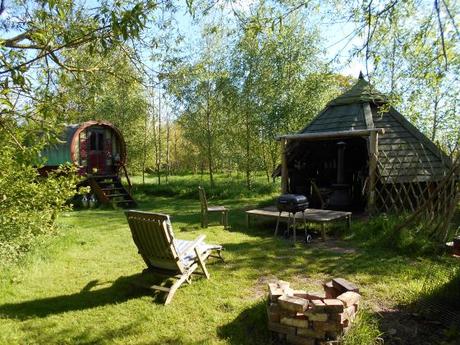
While working on a novel, I occasionally like to take myself off for a few days’ retreat, if possible in a location that gives me some kind of insight into the subject-matter of my writing. In the early days of Riverflow, I stayed in a small cottage on a permaculture farm near Machynlleth in central Wales. My host was delighted to tell me about what they were doing there, much of which fed into my portrayal of Alderleat, from the organic produce in the spacious greenhouse to woodland and landscape protection, management and rewilding. My second local stay was in an attractive gypsy caravan on a totally offgrid glamping site. Working in an open-sided kitchen area on a laptop powered by a solar panel, I not only found space to write, but gained a hands-on insight into my characters’ way of life.
The Welsh border close to my home is formed by a river, the Ceiriog, and I often preface my working day with a walk along its banks. From week to week, month to month, I watch it swell and recede, and the trees, plants and wildlife change with the seasons. This is a perfect reflection of how, a little further afield, the Severn forms the Wales-England border for a short stretch close to the location of Riverflow, and of how the river pervades the novel.
Thank you very much to Alison for telling us the story of the inspiration behind Riverflow and her strong connection with the place where it is set. (The second and third photos show the landscape of the story ‘before and after’ the flood.)
We’d love to hear your thoughts on any stories you’ve read with an eco theme.
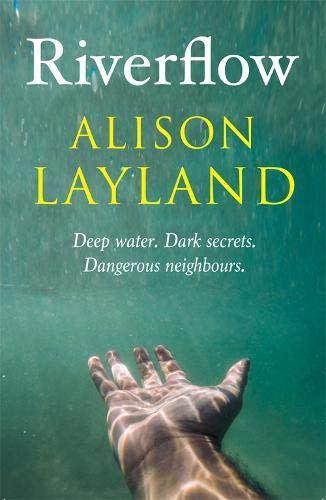
Most eco or climate-change themed novels I’ve encountered are futuristic and tend to the apocalyptic; I liked the groundedness of this one set here (in the UK) and now. It will appeal to activists and readers with a personal commitment to environmental protection but gives others food for thought without overdoing it or compromising on the ingredients of a good story. In fact, the author’s instinct for character plays a big part in the balance she achieves, cleverly getting round the issue of ‘‘preaching’ with her portrayal of the prickly Bede. (He does, sometimes, and it doesn’t go down well…)
There’s a keen eye for the dynamics of life in a small community and it’s unlikely anyone could read about the conflict without adopting a position – then having to revisit it as the tensions swell unnervingly towards breaking point. The strain on Bede and Elin’s relationship mirrors this. Wonderful descriptions of nature contribute to a vivid sense of place – I felt as if I was there, no small feat considering I was somewhere very distant at the time. I also read it in a single day, and you can draw your own conclusions from that.
*POSTSCRIPT*
Next week, as promised in my Summer Reads selection, I’ll be publishing an informal round-up of a few other books I’ve enjoyed as an Add-on – there are five, including two which I’ve only discovered very recently. Bet you can’t wait!
Advertisements
